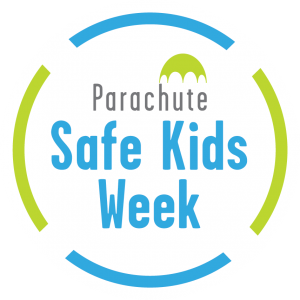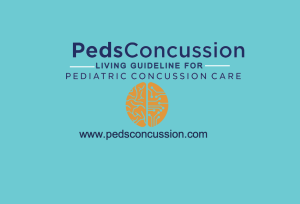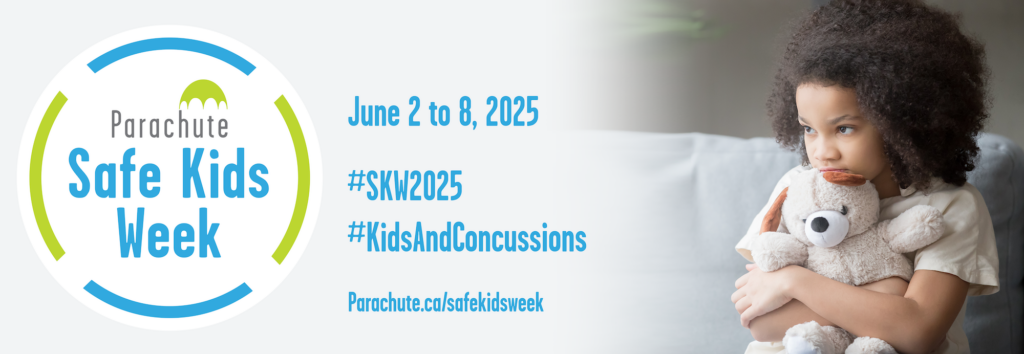
Parachute Safe Kids Week is an annual awareness campaign designed to bring attention to predictable and preventable injuries in children. Parachute celebrates Safe Kids Week June 2 to June 8, 2025, this year with the theme of #KidsAndConcussions.
Our 2025 Safe Kids Week partners
- ABCs Laboratory at the University of Montréal and CHU Sainte-Justine Azrieli Research Centre
- The Living Guideline for Pediatric Concussion
Concussions can happen at any age
- A concussion is a brain injury that happens after a blow to the head, neck or body.
- A concussion can happen without a direct hit to the head: A blow to the body that causes the brain to move rapidly inside the skull can cause a concussion. For example, a child may collide with another person or fall hard on the ground.
- Children have some of the highest rates of concussion, especially from falls.
As children grow older, the main causes of concussion change
- Falls are the prevalent cause of concussions in young children under five years old: 71 per cent of concussion injuries in young children are from falls.
- Falls from a bed, on stairs or from a sofa are the most common types of falls leading to concussions.
- These injuries happen most often while the child is playing (29 per cent)
- Sport and recreation incidents and falls are leading causes of concussion in children ages 5 to 9 years.
- Sport and recreation incidents are the no.1 cause of concussion in older children ages 10 to 14 years.
Parents, caregivers and people who work with children can help prevent concussions
Concussion prevention, among young children, means preventing dangerous falls from high surfaces such as furniture, down stairs and out windows. For older children, more concussions occur during sports and recreation activities. Follow these tips to reduce the chance of a concussion head injury.
Prevent dangerous falls
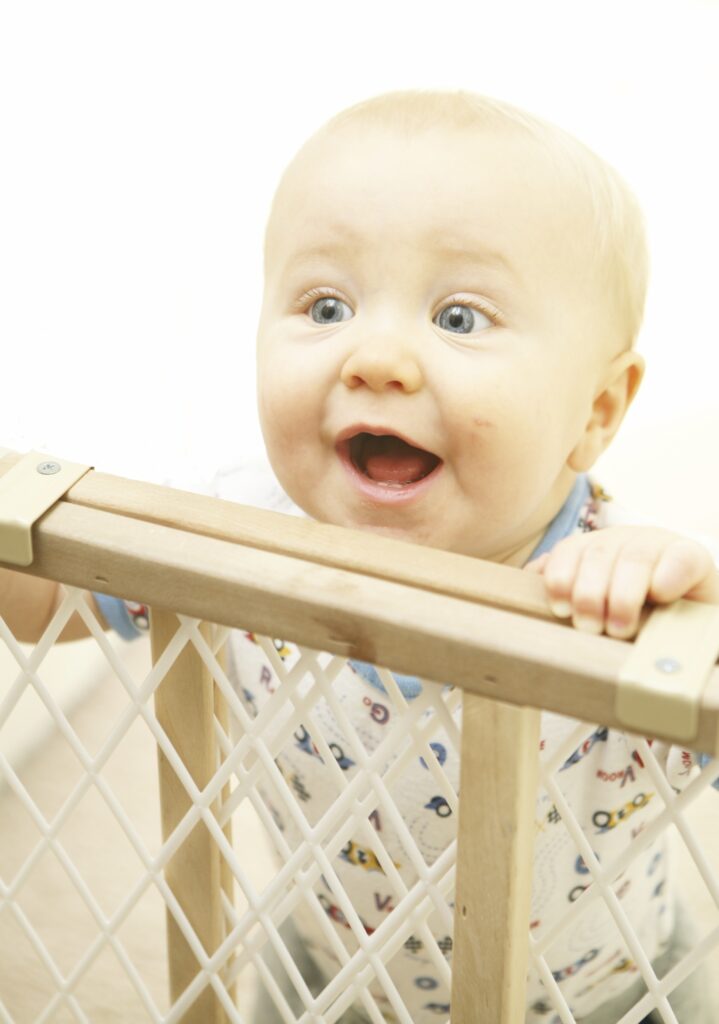
In young children, injuries primarily happen indoors (75 per cent), at home (69 per cent). To help prevent falls at home:
- Watch young children closely and use safety products such as window guards and safety gates. Wall-mounted gates must be used at the top of the stairs and wall-mounted or pressure gates should be used at the bottom of the stairs.
- Avoid baby walkers with wheels: Baby walkers do not help children learn to walk and are banned for sale in Canada. Many children have sustained head injuries from falling down stairs in baby walkers.
- Keep stairs and high-traffic areas of the home free from clutter and tripping hazards such as toys and books. Find out more tips for preventing falls at home.
Prevent concussions during outdoor play
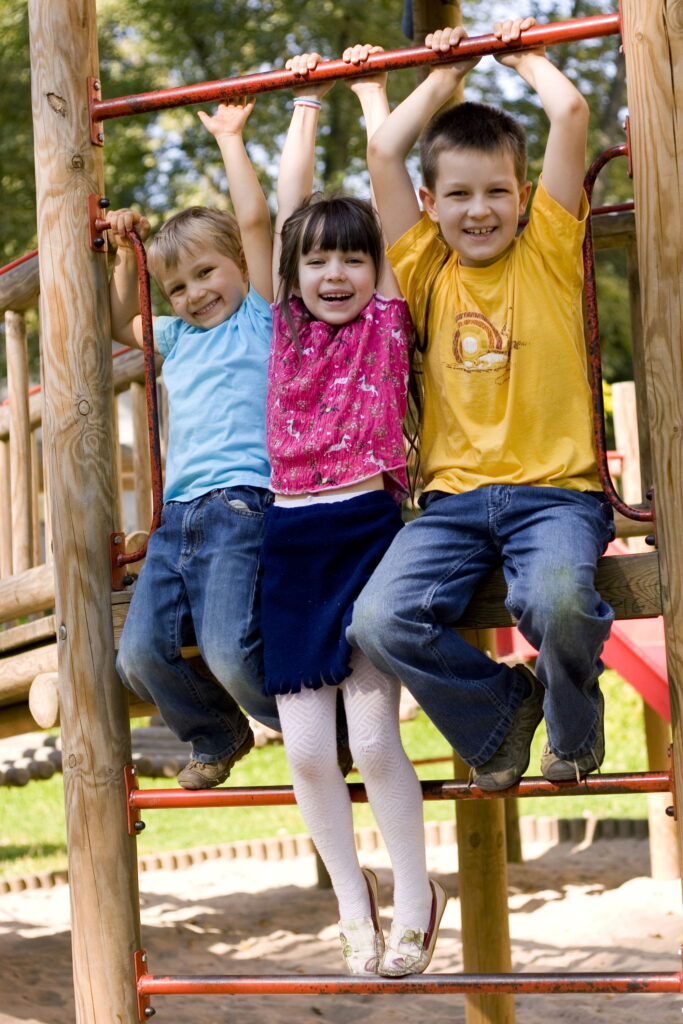
- Outdoor play is always encouraged but make sure your child uses playground equipment that’s designed for their age and development. For example, children under age five should play on equipment lower than 1.5 metres (5 feet).
- Let your child climb play structures but avoid placing them at a height they can’t reach themselves or helping them to climb higher than they are comfortable going.
- Choose playgrounds with deep, soft surfaces that can cushion falls and make sure the play structure has good handrails, barriers and railings. Read more about what you can do and look out for in playgrounds.
Prevent head injuries during sports and recreation

- When playing sports, encourage child to follow the rules that are meant to keep them and others safe. Reinforce wearing the right gear for the right activity, such as wearing properly fitting shoes in physical education class.
- While helmets do not prevent concussions, they prevent other serious head and brain injuries. Ensure you and your child wear properly fitting certified helmets for activities such as biking, scootering and skating.
- Remember, there’s no such thing as a “good” hit to the head! Introduce young children to non-contact forms of sports such as flag football and soccer without heading. When contact is eventually introduced, it should be limited (for example, shorter and fewer contact practices between games).
Learn the signs and symptoms to look for
There are many possible concussion symptoms. Symptoms can be physical, cognitive (thinking), emotional and/or behavioural. The most common concussion symptom is headache. Learn more about signs and symptoms
- Signs of concussion in young children mostly show up as changes in their behaviour. For example, they might be more irritable than usual.
- Young children may not be able to express their symptoms and discomfort after a head injury. After a fall or hit to the head, signs of concussion can include the child rubbing or holding their head, moving slowly, changes to their appetite or loss of new skills (such as toilet training). Use the Early Childhood Detection Tool to learn more.
- As a parent who knows your child well, trust your judgment to recognize changes in your child. You can help give your child a voice.
- Watch for “red flags” such as loss of consciousness, confusion, severe or increasing headache, repeated vomiting or vision problems. If you see any red flags, call an ambulance or take the child to an emergency department right away.
Take these steps to help your child get better
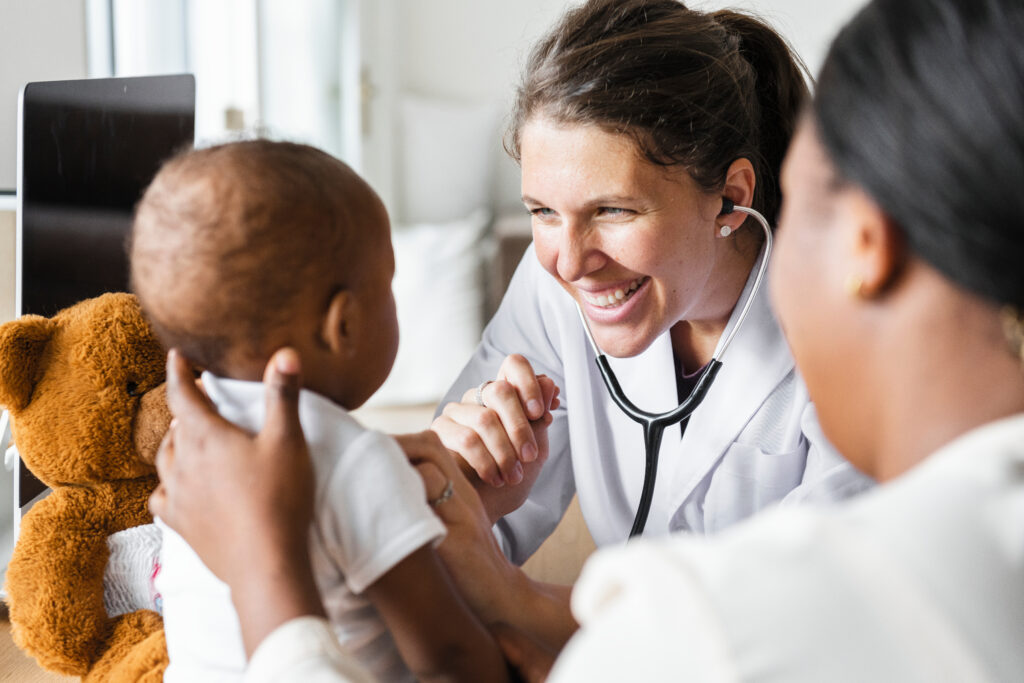
- Remove the child from the activity, unless they are unconscious. In that case, they should not be moved, except to clear the airways.
- The child should not be left alone.
- Watch your child for signs or symptoms, including changes in their behaviour.
- Have the child seen by their primary care provider as soon as possible.
- Follow the guidance of your child’s healthcare professional(s) and adjust your routines as needed to help your child gradually resume their typical activities.
- Contact the adults involved in your child’s care (e.g., daycare staff, teachers, coaches) so they can support your child’s recovery.
Myths vs Facts: Know these misconceptons about concussion
We know more than ever about concussions but old information is still out there. Here are some myth-busting facts to update your knowledge.
| Myth | Fact |
| My child will just bounce back. | A concussion is not just a bump or bruise: it is a brain injury. Just like older children and adults, young children have concussion symptoms that may impact daily living for a while. Most children will recover well through proper assessment, care and management. |
| If a child doesn’t lose consciousness, they don’t have a concussion. | A child does not need to lose consciousness (be knocked out) to have a concussion. Only about 10 per cent of people with concussion lose consciousness. |
| If a child has a concussion, you should wake them up every hour. | Getting a good night’s sleep is important for brain healing. If a child has a concussion, only wake them up during the night if you are concerned about their breathing. |
| A child with concussion should rest in a dark room and do no activities until their symptoms are gone. | Too much rest can actually harm recovery. Getting back to activities, in the right way, helps children and their brains heal. Physical activity needs to be added in gradually and in a low-risk environment at first. Most children can start returning to school or day care in the days following their injury. At first, they may need help such as going for partial days, having extra time to do schoolwork or having a quiet place to take breaks. |
Why we need to pay attention to concussions in kids
A concussion is an injury to the brain. It affects the way a person may think and remember things and can cause a variety of physical, emotional and behavioural symptoms. While most children will get better in about one month, some children may experience longer-lasting effects.
A concussion is often referred to as an “invisible injury”. Without having the proper knowledge about concussion, it can be challenging to know when and how to seek care, how to support a child in their recovery and how to prevent these types of injuries from happening in the first place.
During Safe Kids Week, we encourage parents and others who care for children to learn more about #KidsAndConcussions.
